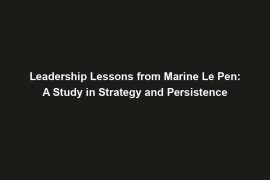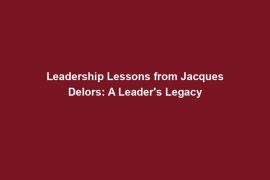Hey there, history buffs! Today, we’re diving into the fascinating world of Philip II of France, also known as Philip Augustus. This guy may have been ruling in the Middle Ages, but his leadership skills are still relevant today.
Philip II was a big deal back in his day. As the King of France, he played a crucial role in expanding French territories through some seriously strategic moves. This guy knew how to plan ahead and make diplomacy work in his favor. And that’s just the tip of the iceberg when it comes to his leadership prowess.
So, why should we care about some old king from the Middle Ages, you ask? Well, my friend, that’s where the juicy part comes in. Philip II’s leadership style and strategies hold some valuable lessons for modern leaders like us. Think about it – setting long-term goals, communicating effectively, and being open to change are all things that can make or break a leader, no matter the time period.
In the next few sections, we’ll break down Philip II’s leadership lessons into bite-sized pieces that you can easily digest. We’ll talk about his strategic vision, his knack for rallying the troops with his words, and his ability to bounce back from setbacks. Trust me, by the end of this, you’ll be itching to apply Philip II’s wisdom to your own leadership journey.
So buckle up, folks, because we’re about to embark on a historical adventure that’s chock-full of practical tips for today’s leaders. Let’s dive in and uncover the timeless lessons that Philip II has left behind for us to unravel. Let’s learn from the past to lead in the present!
Leadership Lessons from Philip II
Now that we’ve established why Philip II of France, also known as Philip Augustus, was such a significant figure during the Middle Ages, let’s delve into the valuable leadership lessons we can learn from his reign.
Strategic vision:
One of the key aspects of Philip II’s leadership was his strategic vision. He was a master at expanding French territories through careful planning and diplomacy. Imagine him as a chess player, always thinking several moves ahead. By setting long-term goals and developing a clear vision for success, he was able to navigate the complex political landscape of his time with finesse.
Effective communication:
Philip II had a way with words that could rally his subjects and allies to achieve his objectives. He knew the power of persuasive communication and building strong relationships. It’s like being the captain of a sports team, knowing how to motivate and inspire your players to give their best performance. By mastering the art of effective communication, Philip II was able to bring people together towards a common goal.
Adaptability and resilience:
Another lesson we can learn from Philip II is his adaptability and resilience. He faced setbacks and challenges throughout his reign, but he never let them deter him from his ultimate objectives. Instead, he was flexible, open to change, and always bounced back stronger than before. It’s like a surfer riding the waves, adjusting their stance and strategy to conquer each new challenge that comes their way.
By studying Philip II’s leadership style and strategies, we can gain valuable insights that are applicable to modern leaders in various contexts. Next, we’ll explore how these lessons can be incorporated into contemporary business and organizational practices.
Applying Philip II’s Leadership Lessons Today
Now that we’ve delved into the leadership lessons from Philip II of France, let’s explore how these principles can be applied in the modern world of business and organizations. While the world may have changed since the Middle Ages, the core tenets of strategic vision, effective communication, adaptability, and resilience remain crucial for successful leadership.
Strategic Vision in Today’s World
In today’s fast-paced and competitive business environment, having a clear strategic vision is essential for success. Leaders need to set long-term goals and outline a roadmap to achieve them. Just like Philip II expanded French territories through careful planning and diplomacy, modern leaders can benefit from thinking strategically and anticipating future challenges and opportunities.
Effective Communication is Key
Communication is at the heart of effective leadership. Philip II’s ability to rally his subjects and allies through persuasive communication highlights the power of inspiring and motivating others towards a common goal. Modern leaders can learn from this by honing their communication skills, building strong relationships, and fostering a sense of unity and purpose within their teams.
Adaptability and Resilience in a Changing World
In a world where change is constant, adaptability and resilience are key traits for successful leaders. Just like Philip II navigated changing political landscapes and overcame setbacks, modern leaders must be flexible, open to change, and resilient in the face of challenges. Embracing change and learning from failures can lead to growth and innovation within organizations.
Conclusion
As we reflect on the leadership lessons of Philip II, it becomes clear that his strategies and style are still relevant in today’s leadership landscape. By incorporating strategic vision, effective communication, adaptability, and resilience into their practices, modern leaders can inspire their teams, drive success, and navigate the complexities of the contemporary world. Learning from historical figures like Philip II can provide valuable insights and inspire leaders to continuously evolve and improve their leadership skills.



